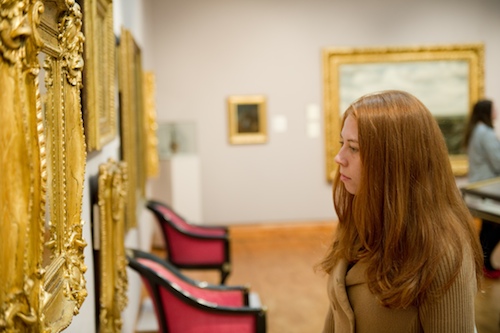The Glasgow Life Partnership
"Glasgow Life is the brand name for Culture and Sport Glasgow. Formerly Culture and Leisure Services. Within the Glasgow Life brand exists the sub-brands of Glasgow Museums, Glasgow Sport, Glasgow Music, Glasgow Events, and Glasgow Communities. Each sub-brand has a responsibility to look after the people of Glasgow out side their working lives. They also deliver major capital projects such as the Riverside Transport Museum and the 2014 Commonwealth Games."

The Glasgow Life partnership or framework was the brainchild of Dr Ellen McAdam (Head of Museums and Collections, Glasgow Museums) and Prof Nick Pearce (Head of the School of Culture and Creative Arts, College of Arts). The aim of the unique relationship between Glasgow Life and the College of Arts is to exploit the vast collections owned by Glasgow City Council and the University of Glasgow to establish programmes of research and enhance communication between its city and its university. Comments Dr McAdam:
“A principle of the Framework Agreement is to view all the collections in the city, including that of the Hunterian, as a single resource. The compatibility of the collections promote this philosophy, for example, the Hunterian has a fantastic collection of Roman archaeology and Glasgow Museums have everything but Roman."
“Glasgow Life has had an aim for some time to produce research relating to the collections in order to fully understand the extent of the collections and how they can be best used. Embarking on a partnership with the University of Glasgow not only addresses the research angle but also puts both organisations in a stronger footing to secure future funding to continue the research in our fields of interest.”
Prof Pearce continues: “A sharing of expertise across the museums as well as academically provides a unique opportunity to make the most of the resources available and ultimately yields a quality of service to the public that would otherwise not have been possible.”

The agreement between Glasgow Life and the University of Glasgow has created a synergy through which staff can move between the museums and the university. One of the first such movements from Glasgow Museums into the university was Ms Rebecca Quinton, Curator for European costumes and textiles. Ms Quinton joins the University's Centre for Textile Conservation and Technical Art History where she convenes a new Masters Programme in Dress and Textile Histories (see The Cutting Edge of Knowledge Exchange). Says Ms Quinton:
“The Glasgow Life partnership enables Glasgow Museums to access specific expertise that they do not have. Furthermore, in our current economic climate where public spending is being greatly reduced year on year, we are expected to increase our outcomes but with a budget that is reducing annually. The relationship with the University of Glasgow enables us to produce more with less.”
A significant capital commitment to the partnership is evident with the development of the Kelvin Hall, which will house a facility for teaching and research as well as community learning. Explains Dr McAdam:
“Development of the Kelvin Hall as a multi-use venue is a very exciting prospect as it creates a real platform for knowledge exchange. In museums there is a guiding principle that the community holds a great deal of useful knowledge and it will be really exciting to bring those two strands together - particularly in Glasgow where communities tend to be very robust and very articulate.”
The Museum Collections of Glasgow City Council are extraordinary. The size and scope of a national collection, they have unfortunately not been researched and published as thoroughly as one might expect and therefore do not enjoy the international profile that other collections of this scale possess. Dr McAdam comments:
“The unique relationship between Glasgow Life and the university has the capacity to change the image of the city. Despite being the European City of Culture in 1990, there is still the perception of Glasgow outside Scotland as being a grim, post-industrial city. It’s not perceived as a city with medieval origins. It has extraordinary collections that should be the focus for international tourism and this partnership provides the opportunity to sell Glasgow as a completely different sort of city.”
A vision for the future is for a greater degree of student and staff exchange, particularly between the Hunterian and Glasgow Museums. The development of more joint programs is an aspect Dr McAdam hopes to see developed and greatly expanded:
“The University already runs a number of museums-based programmes, but in collaboration we have the capacity to go beyond that and offer a whole range of skills across all the cultural disciplines, including arts, performance etc. There are many aspects of museum training that are very difficult to source throughout the UK, which this collaboration could deliver upon. Glasgow could become a Centre for Cultural and Heritage skills. This would be an excellent thing not only for the city but also the UK as a whole.”
Glasgow may already be considered a City of Culture but the Glasgow Life partnership is aiming beyond this to frame Glasgow as an International City of Cultural Excellence.

